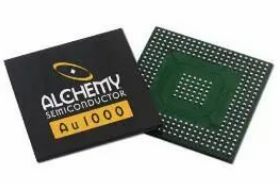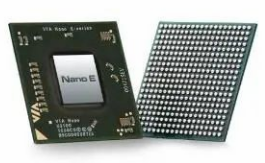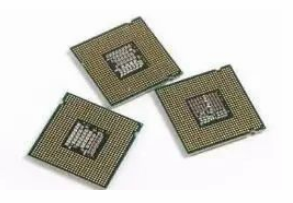Welcome FPGA engineers to join the official WeChat technical group.
Clickthe blue textto follow our FPGA home – the best and largest pure engineering community for FPGA engineers in China.
Introduction to Embedded Processors
Embedded processors are the core of embedded systems, serving as the hardware units that control and assist system operations. Their range is vast, from the initial 4-bit processors to the widely used 8-bit microcontrollers, and the latest 32-bit and 64-bit embedded CPUs that are gaining popularity.
Since the advent of microprocessors, embedded systems have developed rapidly, with embedded processors undoubtedly being the core component of these systems. The performance of the entire embedded system is directly related to the embedded processor. Generally, embedded processors are considered the overall term for the core computational and control devices in embedded systems.
There are more than 1000 types of processors worldwide with embedded functionalities, with popular architectures including over 30 series such as MCU and MPU. Given the broad development prospects of embedded systems, many semiconductor manufacturers are producing embedded processors on a large scale, and companies designing their own processors has become a significant trend in the future of the embedded field. From microcontrollers and DSPs to FPGAs, there are various types with increasing speed, enhanced performance, and decreasing prices. The addressing space of embedded processors can range from 64kB to 16MB, with processing speeds reaching up to 2000 MIPS, and packaging ranging from 8 pins to 144 pins.
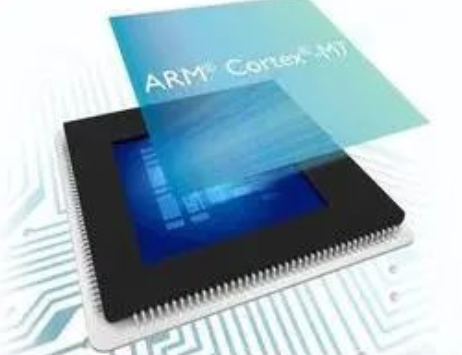 Embedded microprocessors are designed similarly to those in ordinary desktop computers, but they have higher stability, lower power consumption, stronger adaptability to environmental factors (such as temperature, humidity, electromagnetic fields, vibrations, etc.), smaller size, and more integrated functions. In the desktop computer field, the main metric for comparing processors is computational speed, from the 33MHz main frequency of the 386 computer to the 3GHz main frequency of the Pentium 4 processor, with speed being the primary concern for users. However, the situation is entirely different in the embedded field. The choice of embedded processors must be based on design requirements, balancing performance, power consumption, functionality, size and packaging form, SoC level, cost, and commercial considerations to make optimal selections.
As the core of embedded systems, embedded processors undertake important tasks of control and system operation, making the host device intelligent, flexible in design, and easy to operate. To efficiently complete these tasks, embedded processors generally possess the following characteristics: strong support for real-time multitasking, memory protection functions, scalable microprocessor architecture, strong interrupt handling capabilities, and low power consumption.
The core of embedded systems is the embedded microprocessor. Embedded microprocessors typically have the following four characteristics:
Embedded microprocessors are designed similarly to those in ordinary desktop computers, but they have higher stability, lower power consumption, stronger adaptability to environmental factors (such as temperature, humidity, electromagnetic fields, vibrations, etc.), smaller size, and more integrated functions. In the desktop computer field, the main metric for comparing processors is computational speed, from the 33MHz main frequency of the 386 computer to the 3GHz main frequency of the Pentium 4 processor, with speed being the primary concern for users. However, the situation is entirely different in the embedded field. The choice of embedded processors must be based on design requirements, balancing performance, power consumption, functionality, size and packaging form, SoC level, cost, and commercial considerations to make optimal selections.
As the core of embedded systems, embedded processors undertake important tasks of control and system operation, making the host device intelligent, flexible in design, and easy to operate. To efficiently complete these tasks, embedded processors generally possess the following characteristics: strong support for real-time multitasking, memory protection functions, scalable microprocessor architecture, strong interrupt handling capabilities, and low power consumption.
The core of embedded systems is the embedded microprocessor. Embedded microprocessors typically have the following four characteristics:
-
1) Strong support for real-time multitasking, capable of handling multiple tasks with short interrupt response times, thereby minimizing the execution time of internal code and real-time core.
-
2) Strong memory protection functions. This is due to the modularization of the software structure in embedded systems, which requires robust memory protection to avoid erroneous interactions between software modules and facilitates software diagnostics.
-
3) Scalable processor structures that can quickly develop the highest performance embedded microprocessors to meet applications.
-
4) Embedded microprocessors must have very low power consumption, especially for portable wireless and mobile computing and communication devices powered by batteries, where power consumption needs to be at the mW or even μW level.
Embedded microprocessors (Micro Processor Unit, MPU) evolved from CPUs in general-purpose computers. They are characterized by having processors with more than 32 bits and higher performance, although their prices are also relatively high. However, unlike computer processors, embedded applications retain only the hardware functions closely related to embedded applications, removing other redundant functions to meet the special requirements of embedded applications with the lowest power consumption and resource usage. Compared to industrial control computers, embedded microprocessors have advantages such as smaller size, lighter weight, lower cost, and higher reliability. Major types of embedded processors include Am186/88, 386EX, SC-400, Power PC, 68000, MIPS, ARM/StrongARM series, etc.
Among them, ARM/StrongARM is an embedded microprocessor developed specifically for handheld devices, falling into the mid-range price category.
The typical representative of embedded microcontrollers (Microcontroller Unit, MCU) is the microcontroller, which has been widely used in embedded devices since its emergence in the late 1970s, despite being over 20 years old. Microcontroller chips integrate various necessary functions and peripherals internally, including ROM/EPROM, RAM, buses, bus logic, timers/counters, watchdogs, I/O, serial ports, PWM outputs, A/D, D/A, Flash RAM, EEPROM, etc. Compared to embedded microprocessors, the greatest feature of microcontrollers is their single-chip design, which greatly reduces size, thus lowering power consumption and cost while improving reliability. Microcontrollers are the mainstream in the embedded systems industry. The on-chip peripheral resources of microcontrollers are generally abundant, making them suitable for control applications, hence the name microcontroller.
Due to the low cost and excellent functionality of MCUs, they have the most varieties and numbers, with representative examples including 8051, MCS-251, MCS-96/196/296, P51XA, C166/167, 68K series, and MCU 8XC930/931, C540, C541, as well as many dedicated MCUs and compatible series supporting I2C, CAN-Bus, LCD, etc. MCUs account for about 70% of the market share in embedded systems. Atmel’s AVR microcontroller, which integrates FPGA and other devices, offers high cost-performance ratios and is expected to promote further development of microcontrollers.
Embedded DSP processors (Embedded Digital Signal Processor, EDSP) are specialized processors designed for signal processing, featuring special designs in system structure and instruction algorithms that provide high compilation efficiency and instruction execution speed. DSPs have been widely used in various instruments for digital filtering, FFT, spectral analysis, etc.
The theoretical algorithms for DSP appeared in the 1970s, but dedicated DSP processors had not yet emerged, so these theoretical algorithms could only be implemented using MPUs and other discrete components. The lower processing speed of MPUs could not meet the algorithm requirements of DSPs, limiting their application to some cutting-edge high-tech fields. With the development of large-scale integrated circuit technology, the first DSP chip was born in 1982, which was dozens of times faster than MPUs and found widespread use in speech synthesis and codec applications. By the mid-1980s, with advancements in CMOS technology, the second generation of CMOS-based DSP chips emerged, significantly increasing storage capacity and processing speed, becoming the basis for voice processing and image hardware processing technologies. By the late 1980s, the processing speed of DSPs further improved, expanding their application areas to communications and computing. After the 1990s, DSPs evolved into fifth-generation products with higher integration and wider usage.
The most widely used DSPs are TI’s TMS320C2000/C5000 series, along with Intel’s MCS-296 and Siemens’ TriCore, which also have their respective application ranges.
Embedded System on Chip (SoC) aims to achieve the maximum integration of product systems, making it one of the hot topics in the embedded application field. The biggest feature of SoC is the successful seamless integration of software and hardware, directly embedding the operating system’s code modules within the processor. Moreover, SoC features high comprehensiveness, using hardware description languages such as VHDL to realize complex systems on a single chip. Users no longer need to design large and complex circuit boards as in traditional system designs; they can directly call various standard general processors from the device library using precise languages after synthesis timing design, and then deliver it to chip manufacturers for production. Since most system components are internal, the entire system is particularly simple, reducing system size and power consumption while improving reliability and design production efficiency.
Because SoC is often specialized, most are unknown to users. A typical SoC product is Philips’ Smart XA. A few general series include Siemens’ TriCore, Motorola’s M-Core, and certain ARM series devices, as well as the Neuron chip developed jointly by Echelon and Motorola.
It is expected that in the near future, some large chip companies will release mature SoC chips that can dominate the majority of the market, effectively driving out competitors. SoC chips will also play important roles in applications such as sound, image, film, network, and system logic.
Summary of Embedded Processors (Common Types)
1) Embedded ARM Microprocessors (Embedded Microprocessor Structure)
Origin and Development of ARM Microprocessors
ARM (Advanced RISC Machines) can be considered a company name, a general term for a class of microprocessors, or a name for a technology. Currently, microprocessors using ARM technology intellectual property (IP) cores are what we commonly refer to as ARM microprocessors. They are high-performance, low-power 32-bit microprocessors widely used in embedded systems. Microprocessors based on ARM technology occupy more than 75% of the market share of 32-bit RISC microprocessors, and ARM technology is gradually penetrating various aspects of our lives. ARM9 represents the mainstream processor of ARM, which has been widely applied in handheld phones, set-top boxes, digital cameras, GPS, personal digital assistants, and internet devices.
Application Fields of ARM Microprocessors
-
ARM microprocessors are currently used across a wide range of application fields. To date, the applications of ARM microprocessors and technology have nearly covered all product markets, including industrial control, consumer electronics, communication systems, network systems, wireless systems, and more.
-
1. Industrial Control: As a 32-bit RISC architecture, microcontroller chips based on ARM cores occupy a large portion of the high-end microcontroller market while gradually expanding into low-end microcontroller application fields. The low power consumption and high cost-performance ratio of ARM microcontrollers challenge traditional 8-bit/16-bit microcontrollers.
-
2. Wireless Communication: Currently, over 85% of wireless communication devices utilize ARM technology, solidifying ARM’s position in this field due to its high performance and low cost.
-
3. Network Applications: With the promotion of broadband technology, ARM-based ADSL chips are gradually gaining competitive advantages. Additionally, ARM has optimized voice and video processing, gaining broad support and challenging the application areas of DSP.
-
4. Consumer Electronics: ARM technology is widely adopted in popular digital audio players, digital set-top boxes, and gaming consoles.
-
5. Imaging and Security Products: Most of the currently popular digital cameras and printers use ARM technology. The 32-bit SIM smart cards in mobile phones also utilize ARM technology.
Features of ARM Microprocessors Based on RISC Architecture
-
1. Small size, low power consumption, low cost, and high performance;
-
2. Supports both Thumb (16-bit) and ARM (32-bit) dual instruction sets, ensuring good compatibility with 8-bit/16-bit devices;
-
3. Extensive use of registers, resulting in faster instruction execution;
-
4. Most data operations are performed in registers;
-
5. Flexible and simple addressing modes with high execution efficiency;
-
6. Fixed instruction length;
2) Embedded MIPS Processors
Overview of MIPS Processor Development
MIPS is one of the most popular RISC processors in the world. MIPS stands for “Microprocessor without Interlocked Pipeline Stages,” which uses software methods to avoid data-related issues in pipelines as much as possible. MIPS Technology, a renowned chip design company in the United States, designs chips using a reduced instruction set computing (RISC) architecture, manufacturing high-performance, high-end, and embedded 32-bit and 64-bit processors, holding an important position in RISC processors.
MIPS has advanced system architecture and design concepts, with its instruction system evolving from the general-purpose processor instruction sets MIPSI, MIPSII, MIPSIII, MIPSIV to MIPSV, and embedded instruction sets MIPS16, MIPS32 to MIPS64, which have matured considerably.
In terms of design philosophy, MIPS emphasizes hardware-software collaboration to improve performance while simplifying hardware design. Compared to the complex instruction set computing (CISC) architecture used by Intel, RISC has advantages such as simpler design, shorter design cycles, and the ability to apply more advanced technologies to develop faster next-generation processors.
MIPS is one of the earliest commercial RISC architecture chips, and the new architecture integrates all original MIPS instruction sets while adding many more powerful features.
Applications of MIPS Processors
In general, MIPS R series microprocessors are used to build SGI’s high-performance workstations, servers, and supercomputing systems. In embedded applications, MIPS K series microprocessors are currently one of the most widely used processors after ARM (before 1999, MIPS was the most widely used processor in the world), covering various fields such as game consoles, routers, laser printers, and handheld computers.
The PowerPC architecture specification was developed in the 1990s by IBM, Apple, and Motorola, resulting in the creation of multi-processor computers based on PowerPC.
PowerPC architecture features good scalability and flexibility. It is a 64-bit standard (also includes a 32-bit subset). Almost all commonly available PowerPCs (except for the new IBM RS/6000 models and all IBM pSeries high-end servers) are 32-bit.
PowerPC’s market share is not very high, but it is widely used in the control and management of communication systems.
4) Embedded x86 Processors
x86 is an abbreviation for a standard number of Intel general-purpose computer series and indicates a set of general computer instruction sets. X does not relate to the processor; it is a simple wildcard definition for all *86 systems, such as i386, 586, Pentium. Since early Intel CPUs were numbered like 8086, 80286, and because all CPUs in this series are instruction-compatible, they are all referred to as x86, meaning the instruction set used today includes Pentium, P2, P4, Celeron series that support the x86 instruction system, thus belonging to the x86 family.
x86 has become the standard computing platform due to its unparalleled performance-to-price ratio. However, x86 is still based on 32-bit technology, which is inadequate for high-end enterprise servers and workstation applications. Compared to ARM architecture products, embedded x86 processors generally have much higher performance but also higher power consumption. Although they can still maintain fanless operation, they are fundamentally unsuitable for PDA, smartphones, and other handheld computing products that rely entirely on battery power. The genuine demand for embedded x86 processors arises from network terminals, thin clients, low-cost/low-power PCs, and consumer electronics requiring continuity of PC software, where corresponding devices are relatively large, do not rely on battery power, but require high performance, low power consumption, low noise, and high reliability. In 2006, x86 launched its first dual-core processor.
Compared to ARM and MIPS, the application range of embedded x86 processors is narrower. They are mainly used in desktop and low-end server processors.
5) Embedded DSP Processors
DSPs are dedicated processors for high-speed real-time processing after converting analog signals into digital signals, with processing speeds 10 to 50 times faster than the fastest CPUs. In today’s digital age, DSPs have become fundamental components in communications, computing, and consumer electronics. Industry insiders predict that DSPs will be the fastest-growing electronic products in future integrated circuits and will be a decisive factor in the upgrade of electronic products.
DSP belongs to the Modified Harvard architecture, meaning it has two internal buses: the data bus and the program bus. The program and data storage spaces are separated, each with its own address bus and data bus, allowing fetching and reading to occur simultaneously, currently achieving up to 9 billion floating-point operations per second (9000 MFLOPS). It employs pipelining, with each instruction’s execution divided into several steps: instruction fetching, decoding, data fetching, execution, etc., allowing multiple instructions to be executed in parallel, significantly increasing computation speed. Multiplication instructions are completed in a single cycle, optimizing algorithms for convolution, digital filtering, FFT, correlation, matrix operations, etc. Special instructions such as circular addressing and bit-reversed addressing greatly enhance the addressing, sorting, and computation speeds in FFT and convolution operations, with the time for a 1024-point FFT now less than 1μs. It features an independent DMA bus and controller, with one or more independent DMA buses working in parallel with the CPU’s program and data buses, achieving DMA speeds exceeding 800 Mbytes/s without affecting CPU operations. Multi-processor interfaces allow multiple processors to conveniently work in parallel or serially to increase processing speeds.
DSP processors have evolved into embedded DSP processors (Embedded Digital Signal Processor, EDSP) through single-chip integration, EMC modifications, and the addition of on-chip peripherals, driven mainly by the intelligence of embedded systems. Currently, semiconductor manufacturers such as TI, ADI, Freescale, and CEVA have strong capabilities in this field.
General DSPs mainly serve communication applications, while embedded DSPs are primarily used in consumer electronics, such as DVD players and recorders, set-top boxes, audio/video receiving devices, MP3 players, and digital cameras. However, communication chips for WLAN, DSL, and cable broadband networks also feature embedded DSPs.
Welcome communication engineers and FPGA engineers to follow our public account.
National Largest FPGA WeChat Technical Group
Welcome everyone to join the national FPGA WeChat technical group, which has tens of thousands of engineers, a group of engineers passionate about technology, where FPGA engineers help and share with each other, creating a strong technical atmosphere!Hurry up and invite your friends to join!!

Press and hold to join the national FPGA technical group.
FPGA Home Component City
Advantageous component services; for inquiries, please scan the code to contact the group owner: Jin Juan Email: [email protected] Welcome to recommend to procurement
ACTEL, AD advantageous ordering (full series):
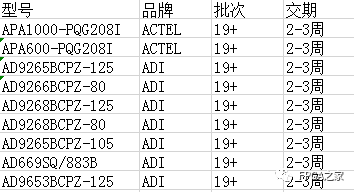
XILINX, ALTERA advantageous stock or ordering (full series):
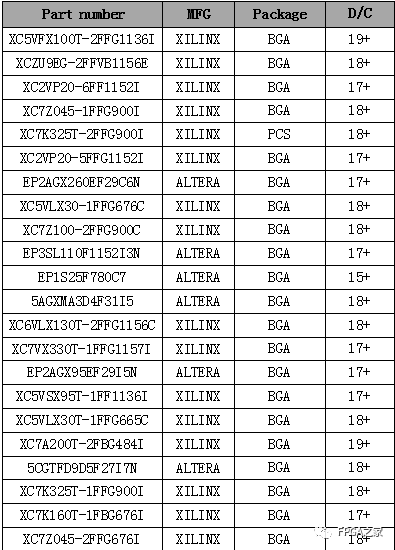
(The above components are partial models; for more models, please consult group owner Jin Juan)
Service philosophy: FPGA Home Component City aims to facilitate engineers in quickly and conveniently purchasing components. After years of dedicated service, our customer service covers large domestic listed companies, military research units, and small and medium-sized enterprises. Our greatest strength is emphasizing a service-first philosophy and achieving fast delivery at competitive prices!
Directly operated brands: Xilinx, ALTERA, ADI, TI, NXP, ST, E2V, Micron, and over a hundred component brands, especially skilled in components subject to US restrictions on exports to China.We welcome engineer friends to recommend us to procurement or consult us directly!We will continue to provide the best service in the industry!

FPGA technology group official thanks to brands: Xilinx, Intel (Altera), Microsemi (Actel), Lattice, Vantis, Quicklogic, Lucent, etc.


